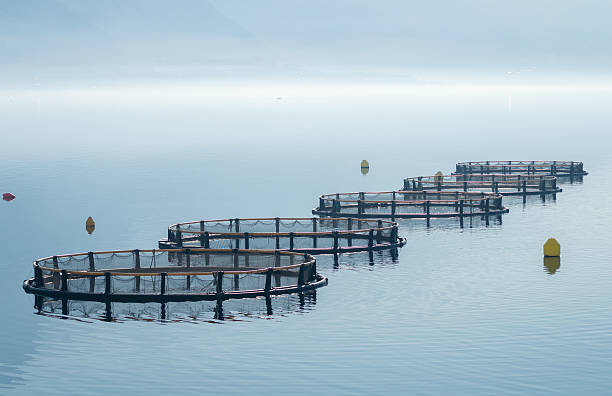
Our sea cages are built using top-quality materials engineered to withstand harsh marine conditions. We offer a variety of cage sizes and configurations to suit different fish species and farming environments.
AQUAFAQ Sea-Cage
Our cage systems are designed to ensure excellent water exchange, promoting the health and growth of your fish stock while reducing disease risk.
Cage Structure
Frame: Made of durable materials like steel or polyethylene
Netting: Strong, flexible mesh that encloses the fish
Mooring System: Anchors and ropes that secure the cage
Netting: Strong, flexible mesh that encloses the fish
Mooring System: Anchors and ropes that secure the cage
Aquatic Environment
Water: The natural habitat where the cage floats, typically rich in oxygen and nutrients.
x Substrate: The sea floor beneath the cage, which can impact water quality and fish health.
x Substrate: The sea floor beneath the cage, which can impact water quality and fish health.
Fish Stock
Species: Commonly farmed species include salmon, sea bass, tuna, and tilapia.
Density: The number of fish per cubic meter, carefully managed to prevent stress and disease
Density: The number of fish per cubic meter, carefully managed to prevent stress and disease
Monitoring and Maintenance Equipment
Sensors: Devices to measure water quality parameters such as oxygen levels, temperature, and salinity.
Cameras: Underwater cameras to monitor fish behavior and health.
Cleaning Equipment: Used to remove biofouling from nets to maintain water flow and prevent diseases.
Cameras: Underwater cameras to monitor fish behavior and health.
Cleaning Equipment: Used to remove biofouling from nets to maintain water flow and prevent diseases.
Feeding System
Automated Feeders: Distribute food at regular intervals.
Feed Type: Usually consists of pellets or other formulated feeds that meet the dietary needs of the farmed species.
Feed Type: Usually consists of pellets or other formulated feeds that meet the dietary needs of the farmed species.
